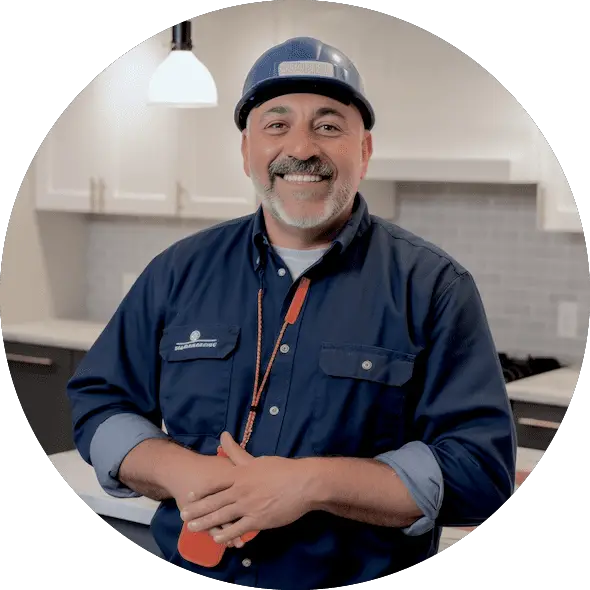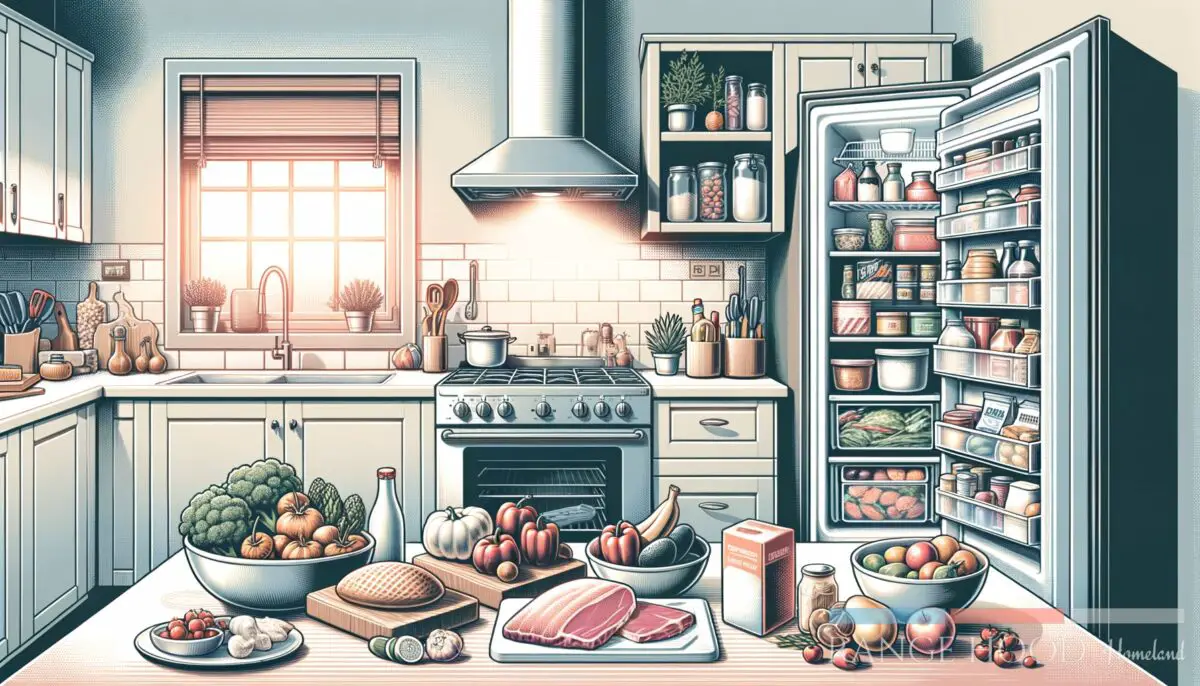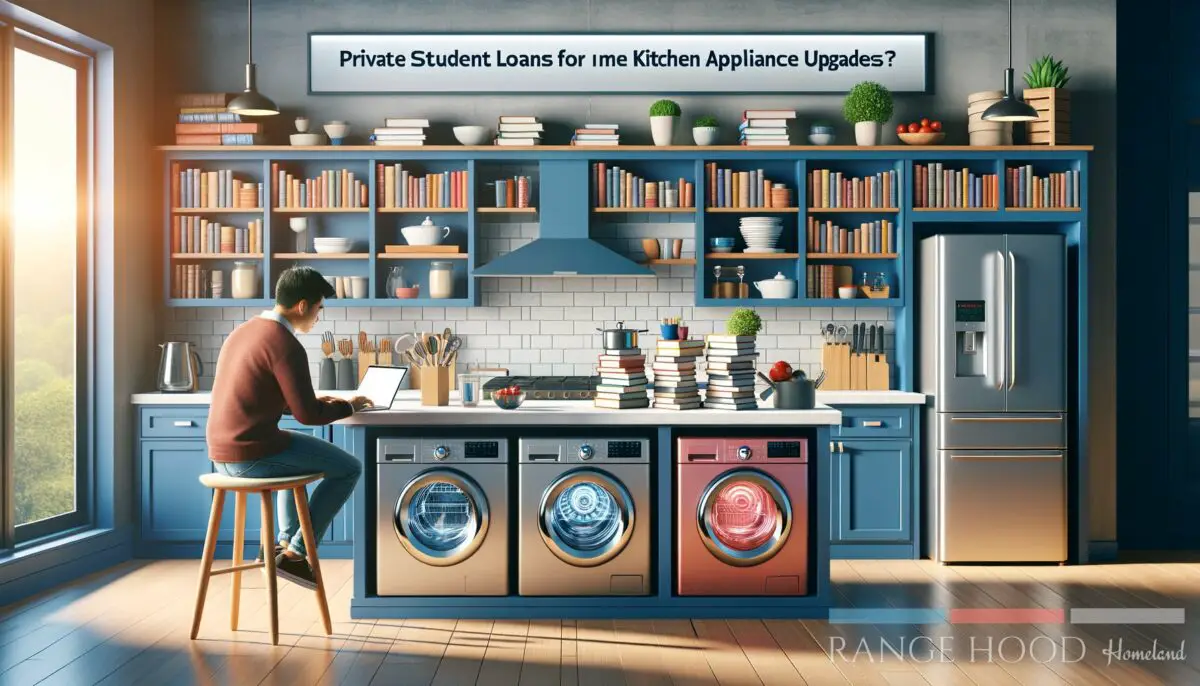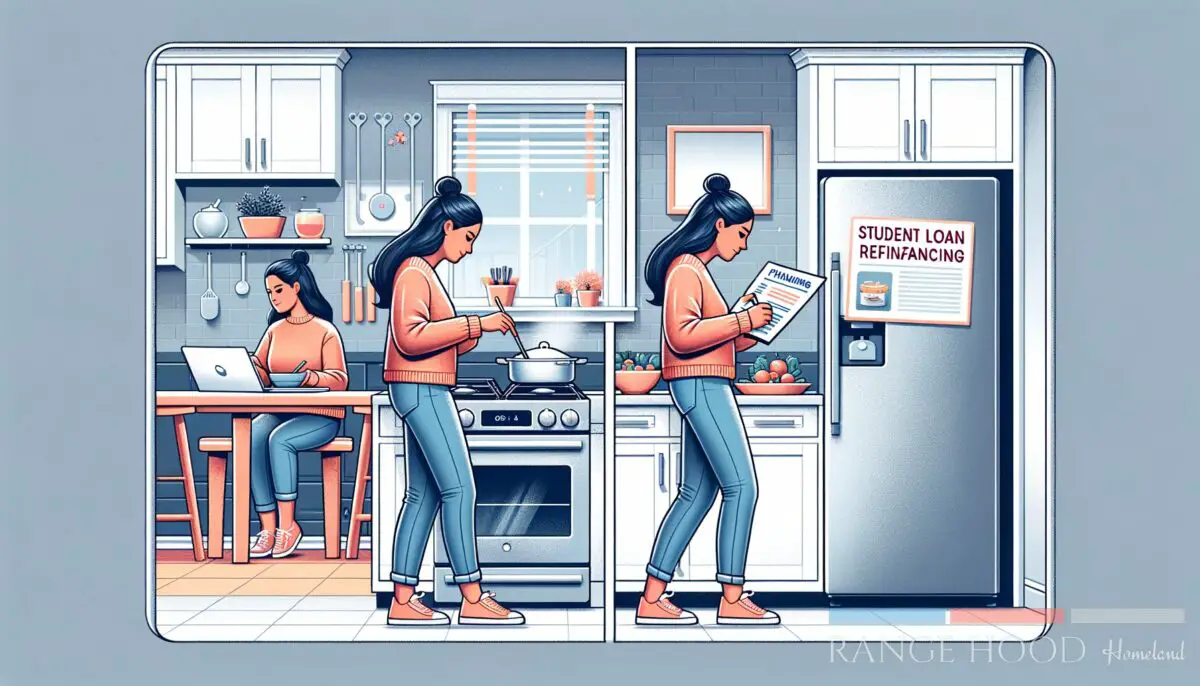Ever debated the best way to equip your commercial kitchen? If you’ve been torn between selecting the right tools or enhancing air quality, you’re not alone.
This hot topic usually leads to heated discussions among chefs and kitchen contractors alike. Just like choosing between top-performing range hoods, understanding the nuances can make all the difference.
In this post, we dive into why proper ventilation is crucial for your kitchen’s performance and safety.
If you are a visual learner, check out this video titled ‘Commercial kitchen exhaust systems at work’
Key takeaways
- Extracts grease and smoke, reducing fire risk and cleaning efforts.
- Manages heat and humidity, enhancing comfort and food safety.
- Improves air quality, protecting health.
- Requires regular maintenance for optimum performance.
What makes ventilation systems indispensable in commercial kitchens?
Proper ventilation in a commercial kitchen isn’t just about keeping the air fresh; it’s a complex system crucial for maintaining a healthy, safe, and efficient work environment. From removing harmful particles to improving air quality, ventilation systems play multiple, vital roles.
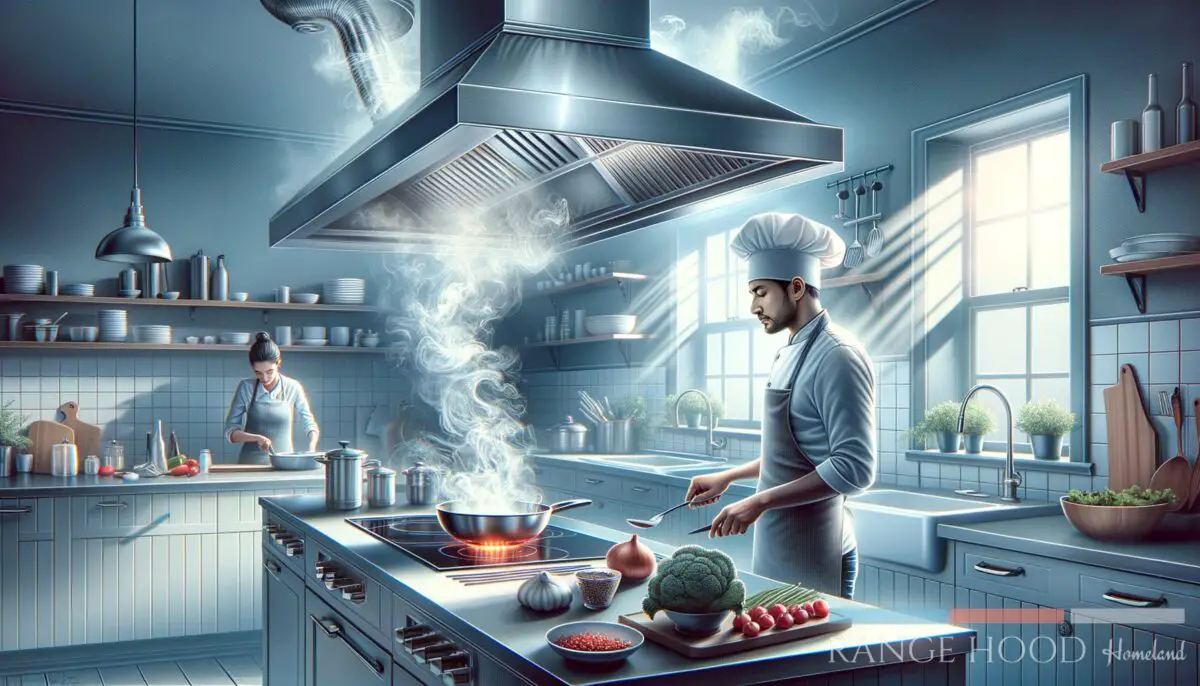
This list goes deep into the reasons why these systems are non-negotiable in any commercial kitchen setup.
1. Grease and smoke extraction
Grease and smoke are inevitable byproducts of cooking. Without efficient extraction, they can coat surfaces, leading to increased fire risk and a challenging cleaning routine.
A top-notch ventilation system removes these particles from the air, keeping the kitchen cleaner and safer. Dive into the specifics of how range hoods combat grease with our guide on choosing the best range hoods for your kitchen.
In addition to reducing cleaning time, this extraction process also significantly lowers the risk of fire. Grease is highly flammable, and its build-up on surfaces can be a severe hazard.
By removing grease from the air before it settles, the ventilation system acts as a critical safety measure.
2. Heat management
Commercial kitchens can quickly become uncomfortably hot, making them difficult environments to work in. Effective ventilation helps manage and reduce excessive heat, maintaining a more comfortable temperature for staff.

Such comfort is not only about improving working conditions; it also relates directly to productivity and job satisfaction.
Moreover, reducing heat isn’t just beneficial for human comfort; it also impacts food safety. High temperatures can accelerate food spoilage and potentially increase the risk of foodborne illnesses.
Proper ventilation helps keep the air and ingredients at safer temperatures.
3. Humidity control
Humidity levels can soar in a busy kitchen, leading to problems like mold growth and slippery floors, which are significant safety risks. Proper ventilation removes excess moisture from the air, helping to control humidity levels.
For more on managing kitchen environments, visit here to learn how to cool down a kitchen effectively.
Controlling humidity is also essential for maintaining food quality. Excessive moisture can ruin ingredients, especially dry goods like flour or spices.
A well-ventilated kitchen ensures these ingredients stay dry and fresh, contributing to the overall quality of the dishes prepared.

4. Odor reduction
Cooking odors, while usually delightful in the moment, can linger and become unpleasant over time, especially in confined spaces. A good ventilation system helps to expel these odors, keeping the air in the kitchen and surrounding areas fresh.
Check out strategies for minimizing kitchen smells and improving air quality with effective kitchen ventilation techniques.
Not only does this improve the atmosphere for staff and patrons, but it also prevents the blending of odors that can affect the taste and presentation of meals prepared in the kitchen. It’s essential for maintaining the distinct flavors and qualities of various dishes.
5. Air quality improvement
Finally, one of the most critical roles of a ventilation system is to improve the overall air quality. Kitchens produce a lot of particulate matter and potentially harmful gases, like carbon monoxide, from burning gas.
“Ensuring your commercial kitchen runs smoothly involves more than just installing a ventilation system. To keep the air in your kitchen clean and your team working effectively, consider these more tips.They’ll help you maintain an optimal environment for preparing those delicious dishes your customers love.”
A robust ventilation system reduces these health risks by filtering out harmful particles and gases, ensuring the air remains clean and safe to breathe.
Improving air quality is vital not only for the health and well-being of the kitchen staff but also for the patrons dining in the establishment. Clean air contributes to a more pleasant dining experience and upholds the establishment’s reputation for maintaining a high-quality environment.
COSMO COS-63190S Wall Mount Range Hood

COSMO COS-63190S Wall Mount Range Hood
More ventilation tips
Ensuring your commercial kitchen runs smoothly involves more than just installing a ventilation system. To keep the air in your kitchen clean and your team working effectively, consider these more tips.
They’ll help you maintain an optimal environment for preparing those delicious dishes your customers love.
- Regularly inspect and clean filters to prevent clogs and maintain efficient airflow.
- Consider the layout of your kitchen when positioning ventilation equipment for maximum effect.
- Use fans to assist with air circulation, particularly in areas further away from the main vent.
- Schedule professional inspections annually to ensure your system complies with local health and safety regulations.
- Invest in energy-efficient models to reduce running costs without compromising on air quality.
When it comes to keeping your kitchen’s air quality top-notch, there are certain dos and don’ts you’ll want to keep in mind:
| Do | Don’t |
|---|---|
| Regularly clean vent hoods and filters. | Ignore local codes and regulations. |
| Ensure proper installation of the system. | Block air vents with equipment or storage. |
| Educate staff on maintaining ventilation. | Overlook signs of ventilation failure. |
| Use eco-friendly cleaning products. | Delay repairs or maintenance checks. |
Efficient ventilation in commercial kitchens: A balance between air quality and safety.
Advantages and disadvantages of proper ventilation in commercial kitchens
The installation and maintenance of a proper ventilation system in a commercial kitchen come with their share of benefits and challenges. Recognizing these can help you better plan and optimize your kitchen operations, ensuring a healthy and productive environment.
Advantages
- Improves air quality, reducing health risks for staff and patrons.
- Reduces heat and humidity, making the kitchen environment more comfortable.
- Lowers the risk of fire by extracting grease and smoke.
- Helps maintain food quality by controlling humidity and odors.
- Enhances overall safety through better air and reduces slip hazards.
Disadvantages
- Installation can be costly, especially for advanced systems.
- Regular maintenance is required to keep the system running efficiently.
- Energy consumption could increase, depending on the system and usage.
- Noise levels may rise, potentially affecting the working environment.
- Space requirements for ductwork might limit kitchen layout options.
Understanding these pros and cons will guide you in making informed decisions, ensuring your commercial kitchen not only meets health and safety standards but also provides a pleasant working and dining environment.
In my opinion, though I’m no expert on commercial kitchen dynamics, the role of ventilation systems can’t be overstated. They’re akin to the lungs of a kitchen, breathing in and out, ensuring that everything from air quality to temperature is regulated effectively.
An efficient system contributes significantly to not just the physical, but also the working environment, indirectly influencing the morale and productivity of the kitchen staff. Proper ventilation ensures that the kitchen becomes a safer, more pleasant place to work, which I believe is crucial for quality and efficiency.
Learn more about the indispensable role of range hoods in maintaining kitchen ventilation here.
Even though my culinary expertise might not win me a Michelin star anytime soon, it’s clear to me that investing in a good ventilation system is as crucial as investing in quality ingredients for any commercial kitchen. Just like high-quality ingredients can elevate a dish, effective ventilation can dramatically improve the working conditions, safety, and overall operational efficiency of a kitchen.
It’s an integral component that, while usually operating in the background, plays a critical role in the foreground of culinary excellence.
Frequently asked questions (FAQ)
What’s the best way to educate staff about ventilation system maintenance?
Educating staff about the importance of ventilation system maintenance starts with hands-on training and regular reminder sessions. It’s crucial to demonstrate how to clean filters, identify signs of potential issues, and whom to alert if a problem arises.
Adding this training into the onboarding process and conducting periodic refreshers can ensure everyone understands their role in maintaining air quality and safety.
Can a poorly maintained ventilation system affect food taste?
Yes, a poorly maintained ventilation system can negatively impact food taste. Accumulated grease, smoke, and food particles can alter the kitchen’s air quality, contributing to unwanted flavors in dishes.
Regular cleaning and maintenance of the ventilation system help prevent these issues, ensuring that meals served maintain their intended flavors and high quality.
How usually should a commercial kitchen’s ventilation system be professionally inspected?
A commercial kitchen’s ventilation system should be professionally inspected at least once a year, though more frequent inspections may be necessary depending on the volume of cooking and local regulations. Professional inspections can identify issues that may not be obvious to staff, ensuring the system operates efficiently and safely.
Final thoughts
As we wrap up this exploration of ventilation in commercial kitchens, it’s clear that the significance of a well-designed system can’t be overstated. From improving air quality and controlling temperature to mitigating hazards like fire and ensuring the longevity of your equipment, proper ventilation is the backbone of a safe, efficient, and pleasant kitchen environment.
Embracing these insights, tips, and practices ensures not just compliance with health and safety norms, but also a commitment to the well-being of your staff and the satisfaction of your patrons.
What aspect of kitchen ventilation do you find most challenging or intriguing? Did I cover everything you wanted to know? Let me know in the comments section below; I read and reply to every comment. If you found this article helpful, share it with a friend, and check out my full blog for more tips and tricks on keeping your commercial kitchen at the top of its game.
Thanks for reading, and here’s to a well-ventilated, productive kitchen!

